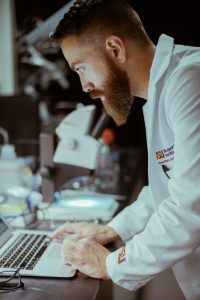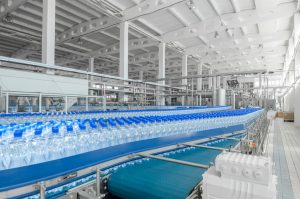Shocking … shockingly WRONG

Charlie Rolsky at work in his lab at Arizona State University. Photo: ASU
Yes, the plastic pollution epidemic has spun out of control. We are creating and using much more plastic than we should, especially considering how recycling has taken such a hit recently. China, our top customer of plastic recyclables, has stopped purchasing from the US, mostly due to our inability to separate recyclables from trash. This has caused our own recycling centers to become overburdened and unable to keep up with the amount we are dropping into the blue bins daily.
Yes we are making too much, yes we are using too much, and yes, it is a massive problem. But no, not every single piece ever created is still around. Statements like this, although catchy, are dangerous because they take a small piece of information and extrapolate it out to a level that surpasses the line of truth. Many plastics HAVE actually disappeared from our planet. For example, a common trash elimination strategy is incineration. In addition, certain plastics such as polylactic acid are designed to break down a little faster. Within the right environment, it too will break down.
Science isn’t always black and white. Yes or no. Right or wrong. There is a ton of grey area. And that isn’t necessarily due to science or researchers failing at proving something. It just means that we see trends on a small scale because many of these problems are so expansive that it is impossible to know just how grave the issue might be.

Plastic water bottles in production.
Think about it, if we have only explore a fraction of the ocean, how could we possibly get a grasp on how much plastic is in there? What we can do is start on a smaller scale with something we can control. A beach, for example. We can count plastic particles within one square meter and then multiply that number by how many meters of beach there are in the area. This will not be 100% accurate since there is variability, but this is how science often operates. It gives us a good, sometimes rough idea of the gravity of a problem.
This is exactly why we need to be careful with how we word things, especially when speaking from that gray area. But hey, that’s why I’m here. I’ll be working with Plastic Oceans to help break down ideas like this in a series we are calling “Breaking It Down” (get it?).
Soon we will be bringing you content relating to plastic pollution, our world’s oceans, and everything in between.
Let’s go!
PLEASE DONATE TO PLASTIC OCEANS
Charlie Rolsky is Plastic Oceans International’s Director of Science for North America. He conducts research at the Arizona State University (ASU) Biodesign Center for Environmental Health Engineering where he works on marine and aquatic plastic pollution. READ HIS FULL BIO HERE.

Trackback: คลิปหลุดโอลี่เเฟน